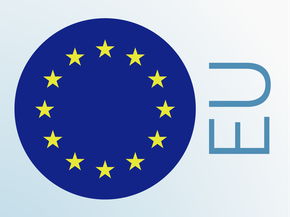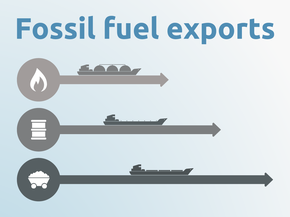Country summary
Overview
China’s emissions stabilised at near-record-high levels in 2024, following a sharp increase in fossil fuel consumption in 2023 after the lifting of zero-COVID policies. The country’s energy transition continues to reflect two seemingly opposing trends: rapid deployment of renewables—surpassing its 1,200 GW wind and solar capacity target six years ahead of schedule—and a surge in coal power construction, with 2024 marking the highest level in a decade due to the 2022-2023 permitting boom. China’s oil demand declined in 2024 as transport electrification advanced, while the projected rise in fossil gas use undermines its transition to net zero and alignment with a 1.5°C pathway.
The CAT projects that China’s CO2 emissions are nearing their peak, if they have not already peaked, as agreed by a growing number of domestic and international experts. However, the path ahead remains uncertain, hinging on the energy and emissions targets to be set in China’s 2035 NDC, pledged by President Xi Jinping for submission before COP30.
Clean energy technologies—particularly the “new three” sectors of electric vehicles, batteries, and solar power—remained a key driver of China’s economic growth, contributing over 10% of the country’s GDP in 2024 for the first time, with combined annual investment and sales reaching USD 1.9 trillion.
China is significantly off track in meeting its emission intensity reduction targets under both its 14th Five-Year Plan for 2025 and its 2030 NDC commitment under the Paris Agreement. While the impacts of COVID-19 and slower economic growth have contributed to the shortfall, the main challenge lies in rapidly growing energy demand, with renewables not being integrated quickly enough to displace fossil fuels. Bridging the remaining shortfall in carbon intensity reductions —and meeting the 2030 NDC target—will require significantly greater climate ambition in the next Five-Year Plan.
The CAT’s overall rating for China’s policies and targets remains “Highly insufficient”.
We estimate China’s 2024 GHG emissions at 15.8 GtCO2e (excl. LULUCF), a marginal increase from 2023. Emissions remain stable, as rising fossil energy use and falling cement production roughly cancel each other out.
We expect absolute 2030 emission levels to be up by 5-6% from our previous assessment, reaching 14.5 to 15.5 GtCO2e (excl. LULUCF). In our conservative scenario, China’s emissions are expected to plateau at today’s high levels until around 2028, followed by a modest annual decline averaging 1.7% through 2035. In contrast, an optimistic scenario, with accelerated renewable deployment and a faster coal phase-down, projects emissions peaking as early as 2025, followed by a steeper annual decline averaging 2.5%. This would result in an additional 6% reduction by 2030 and 12% by 2035, compared to the conservative pathway.
Compared to our previous assessment, the 2030 emissions estimate has been revised upward, primarily due to higher-than-expected emissions in 2023 following a strong post-zero-COVID rebound. Since 2024, China’s energy demand has continued to grow strongly, driven largely by tech-intensive manufacturing sectors such as electric vehicles, electronics, and robotics. The lower bound of our 2035 estimate remains unchanged from the previous assessment, reflecting the continued plausibility of a rapid emissions decline after a 2025–2030 peak, supported by sustained growth in renewables and more controlled energy demand.
China is significantly off track to meet its 2025 emissions intensity reduction target, with less than a year remaining in the 14th Five-Year Plan (FYP) period. By the end of 2024, CO2 intensity has only been reduced by 12% from 2020, making the 2025 target of 18% increasingly difficult to achieve. We project that China will reduce its emissions intensity by 15–16% by 2025, even if GDP grows at the 5% rate targeted at the "Two Sessions" (annual plenary sessions of two of China’s major political bodies).
As in previous years, our analysis shows emission levels under domestic policies to be lower than China’s 2030 energy-related NDC targets. Wind and solar power capacity is growing at a record pace, reaching over 1,400 GW in 2024—six years ahead of the 1,200 GW target. China is also on track to achieve its non-fossil energy share target of 25% without significant additional effort. However, the NDC target of a 65% reduction in carbon intensity from 2005 levels remains a challenge, requiring emissions to be limited to no more than 14.2 GtCO2e (excluding LULUCF) in 2030. This is below our optimistic scenario, underscoring the need for rapid decarbonisation through more ambitious policies in the 15th FYP (2026-2030).
China has pledged to submit its 2035 NDC before COP30, for the first time covering all economic sectors and greenhouse gases, while reaffirming its commitment to climate action regardless of global uncertainties. A the powerhouse of the global energy transition, supplying 80% of solar panels, 60% of wind turbines and 75% of electric vehicles globally, China has a strong incentive for global climate action. However, it remains unclear how far China will go and how this will be reflected in its 2035 targets or possible enhancements to its 2030 targets—some of which have already been met ahead of schedule. Geopolitical tensions, economic headwinds, and growing unpredictability of international trade barriers add further uncertainty to the prioritisation of climate action.
To align emissions with its 2060 carbon neutrality goal, China needs to:
- Control and reduce fossil fuel dependence, by integrating clear targets for coal consumption reduction in China’s updated NDC and the 15th Five-Year Plan. Energy consumption is projected to grow by over 10% by 2030 in both of our scenarios.
- Improve the formulation and coverage of its 2035 targets by introducing an absolute emissions cap and reduction targets. China’s existing peaking, carbon intensity, and non-fossil energy share targets are relative to economic growth or energy system developments, allowing the country to meet its NDC commitments while increasing emission levels. Continuing with intensity-based targets or setting percentage reductions from an unspecified peak would similarly permit emissions growth—further jeopardising the global 1.5°C goal. While China has pledged that its 2035 NDC will be economy-wide and cover all greenhouse gases, the format of targets for non-CO2 GHGs remains unclear. Additional measures to control non-CO2 emissions beyond their inclusion in the overall target would strengthen the NDC and help ensure concrete reductions in methane and other non-CO2 gases.
- Raise the ambition of its 2030 energy-related targets: China reached its 1,200 GW wind and solar capacity target six years ahead of schedule, totalling 1,400 GW in 2024. China is also on track to meet its 25% non-fossil energy share target by 2030, with our projections suggesting it could surpass 30% in both conservative and optimistic scenarios. To further accelerate renewable energy deployment and integration through the remainder of the decade, China’s updated NDC is expected to strengthen ambition by enhancing its existing 2030 energy-related targets.
- Accelerate decarbonisation of high-emitting industry sectors by supply-side structural reforms, expansion of the national ETS, and improvements in its design.
While China’s dependency on fossil fuels and high emission levels looks set to stay for the foreseeable future, the energy transition continues to build momentum, highlighted by high rates of renewable installations, deepening reforms in the power sector, and mitigation policies in end-use sectors:
- China is the global powerhouse of the energy transition supply chain, manufacturing over 80% of solar panels, 60% of wind turbines, and 70% of electric vehicles, and 75% of batteries worldwide.
- China remained a global leader in energy transition investment in 2024, accounting for 39% of the global total and two-thirds of the global increase. Investment and sales in clean energy technologies contributed over 10% of China’s GDP for the first time, totalling USD 1.9 trillion. The “new three” sectors—electric vehicles (EVs), batteries, and solar power—alone generated USD 1.1 trillion in value added.
- Renewable energy is expanding rapidly in China, both in installed capacity and power generation. By 2024, total renewable capacity (including hydropower) reached 1,840 GW, accounting for 55% of total power generation capacity. Solar and wind additions rose by 28% and 5% year-on-year, reaching 1,400 GW by the end of 2024 and surpassing the 2030 NDC target of 1,200 GW six years early.
- China is leading the global EV market, producing 70% of all EVs sold worldwide. EVs and batteries were key drivers of China’s clean energy economy, contributing nearly 4% of GDP in 2024. Over 12 million new energy vehicles (NEVs)—including battery EVs and plug-in hybrids—were produced and sold, capturing a 40.9% market share. NEVs now make up 8.9% of all vehicles on the road in China, the majority being battery EVs
While China emits over one-third of global CO2, it is also the world’s factory, producing more than one-third of global manufactured goods. Our calculations follow a production-based approach, which does not reflect the role of international trade in driving China’s emissions. According to a study by Chinese scholars, China remains the world’s largest undertaker of embodied trade carbon emissions. The gap between emissions embodied in China’s exports and those in its imports widened from 0.7 Gt in 1990 to 1.8 Gt in 2019.
Description of CAT ratings
The CAT rates each country’s targets and policies against (1) its fair share contribution to climate change mitigation considering a range of equity principles including responsibility, capability and equality, and (2) what is technically and economically feasible using modelled domestic pathways which in absence of a better method are based on global least-cost climate change mitigation.
Comparing a country’s fair share ranges and modelled domestic pathways provides insights into which governments should provide climate finance and which should receive it. Developed countries with large responsibility for historical emissions and high per-capita emissions, must not only implement ambitious climate action domestically but must also support climate action in developing countries with lower historical responsibility, capability, and lower per-capita emissions.
The CAT rates China’s climate targets and policies as “Highly insufficient”. This rating indicates that China’s climate policies and commitments are not consistent with the Paris Agreement’s 1.5°C temperature limit.
China is not meeting its fair share contribution to climate change mitigation. China’s unconditional NDC and policies and action are rated as “Insufficient” compared to its fair share. China’s unconditional NDC is rated as “Highly insufficient” compared with modelled domestic pathways.
To improve its rating, China should set an ambitious and economy-wide absolute emission reduction target and adopt policies to reduce dependence on coal, thereby setting its national emissions on a downward trend.
China's suite of sectoral 14th Five Year Plans set out a range of mitigation measures to prepare the country for a post-coal transition but is unable to counter growing energy demand and reduce dependence on fossil fuels. Under current policies, absolute emissions in 2030 have increased by 5-6% from the previous assessment, making it more difficult to reach long-term carbon neutrality.
The country is expected to well overachieve its energy-related NDC targets, yet it risks failing in meeting its carbon intensity target. The CAT maintains its rating of China’s climate policies as “Insufficient”.
Record-high renewable deployment is now close—if not already sufficient—to meeting growing electricity demand, curbing coal power generation and reducing power sector CO2 emissions in the first quarter of 2025.
Meanwhile, coal plant construction continues to expand, driven by regional stimulus and framed as support for grid flexibility. In 2024, China remained dominant in global coal trends, with new proposals, commissioning, and construction starts exceeding the rest of the world combined. Construction starts reached 94 GW—the highest level since 2015—driven by a permitting boom in 2022–2023. To avoid further carbon lock-in, China should halt new coal plant approvals, repurpose existing plants for grid flexibility, and accelerate retirements to prevent overcapacity.
Persistent overcapacity and weak demand—largely due to the ongoing real estate downturn—continue to challenge China’s cement and steel industries, as reflected in falling cement production and rising exports of steel and cement. Key supply-side measures include enhancing energy efficiency, scaling up electrification, and phasing out outdated production capacity. In March, the State Council approved the expansion of China’s national ETS—currently limited to the power sector—to include cement, steel, and aluminium, with the first compliance deadline set for the end of 2025.
The full policies and action analysis can be found here.
Under China’s NDC targets, the country’s emission levels would reach 14.6 GtCO2e/year in 2030. This projection, based on the median value of conservative and optimistic estimates from the two most binding energy-related NDC targets (peaking and carbon intensity targets), represents a 32% increase from 2010 levels.
China has already exceeded its NDC target for wind and solar power capacity, and current policies are on track to surpass the target for the share of non-fossil energy consumption. This indicates potential for further raising these commitments in its updated NDC expected later this year. However, it is not yet sufficient to ensure that China meets its carbon intensity target.
The CAT keeps its rating of China’s NDC target against modelled domestic pathways in 2030 as “Highly Insufficient”, indicating that its 2030 domestic targets need substantial improvements to be consistent with the 1.5°C temperature limit.
China’s emission levels under its NDC commitments are higher than what would be deemed 1.5°C compatible compared to our “fair share” approach. The CAT maintains its rating of China’s NDC targets against its fair share as “Insufficient”. This rating takes into account the fact that China has effectively submitted an unconditional NDC target but has not indicated a level of emissions that would be achieved with international support (a conditional NDC target).
China’s President Xi Jinping first announced China’s commitment to reach “carbon neutrality before 2060” in a declaration at the UN General Assembly in September 2020. China has since officially submitted a long-term strategy (LTS) to the UNFCCC in October 2021. As the LTS submission does not meet the majority of our criteria for a best-practice approach in LTS formulation, we keep China’s net zero target evaluation as “Poor”.
Further analysis
Latest publications
Stay informed
Subscribe to our newsletter






